St. Sebastian: the Catholic Church’s Most Sexualized Martyr — by Design
Diving deep into the saint of archers and athletes — now a gay icon
Why does the Catholic Church push such homoerotic imagery? It’s simple. Because it works for them. Saint Sebastian is one of the most popular saints in the church’s complex system of symbols, structures, and saints. Sebastian’s allure — and his toned muscular flesh — has attracted many to the church over the centuries. He stands as one of the best symbols — and advertising images — any organization on earth ever conjured. He’s a symbol of suffering, redemption, agony and ecstasy, and ultimately — virile sexual energy that has no doubt made morning prayers a little more fun for lonely nuns and monks throughout Catholic history. The church’s specialty of fusing suffering and ecstasy is perfectly embodied in even the earliest depictions of Sebastian.
And though Sebastian’s torso and sometimes his arm are always depicted pierced by arrows, blood dripping from fresh puncture wounds — he didn’t die from the arrows as many believe. He died years later — and it’s not a pretty story.
Every year, on the 20th of January, the Roman Catholic Church commemorates the life and death of the early Christian martyr Saint Sebastian who lived from approximately 256 — 288 AD by doing strange rituals that the church is famous for.
The patron saint of archers, pin-makers (whatever that is), and athletes — as well as numerous cities around the world — the figure and holy death of Saint Sebastian has been revered for many centuries, and his story of religious defiance in the face of tyranny continues to resonate.
The image of Saint Sebastian tied to a post or tree — his body riddled with protruding arrows — has since become iconic in art history. And this image has transformed quite dramatically over the centuries.
According to a 5th century hagiography, Saint Sebastian was a middle-aged Roman soldier who served under the pagan emperor Diocletian who ruled at the end of the 3rd century AD. As a Christian, Sebastian was sentenced to death by archer firing squad as part of the Diocletianic Persecution — the last and most severe attack on Christians in the Roman Empire. Somewhat miraculously, Sebastian was not killed by this onslaught of arrows. He was nursed back to health by Saint Irene — though she was just Irene at the time.
After his recovery, Sebastian confronted Diocletian publicly and was promptly clubbed to death for his impudence. His dead body was dumped in a sewer before it was retrieved by Saint Lucy and buried in a Roman catacomb, where a basilica bearing his name still stands.
The legacy of Saint Sebastian has continued on through art history, particularly through sculpture and paintings that depict his moment of torture and his eventual demise.
During the medieval era, Saint Sebastian was usually depicted as a mature and manly figure. He occupied an important place in the medieval mind, and symbolised the divine protector against the plague — alongside the archer god Apollo. After the Black Death ravaged Europe in the 1300s, his image evolved into a youthful, healthier looking young man rather than an elderly man.
The artists of the Italian Renaissance rejected earlier depictions of Saint Sebastian. Instead, they favoured depictions of masculinity deriving from Ancient Greece — embodying ideals of ephebic beauty.
Subsequently, Sebastian is usually depicted as a handsome young man with a perfectly sculpted body. He’s nearly always naked, his modesty barely covered by a thin loincloth.
In true Christian stoic fashion, Sebastian does not cry out in pain as his body is pierced by the arrows but looks off into the distance or towards the heavens with an enigmatic expression — an almost sublimely unbothered look.
Sebastian’s typically ambiguous expression can be understood in several ways. There is at the same time both conflict and peace suggested in his slightly furrowed brow, the gentle twist of his body and slightly parted lips.
Sebastian has often been depicted as emblematic of the pleasure and pain dichotomy within Christian martyrdom — that is, that one must endure pain on earth in order to receive the pleasure of eternal salvation. There’s also a sense of longing in his gaze, whether this is for his future sanctification, the earthly life that he is leaving behind, or both, is unclear.
In more recent interpretations, the Christian fixation with the desirable bodies of its saints and the permeable boundaries between the bodily flesh and the divine have been seen as homoerotic or queer. Scantily clad paintings of Saint Sebastian can be understood as inviting voyeurism to the beautiful male nude.
In some instances, Sebastian’s head is thrown back in supposed pleasure, making the presence of ropes and restraints positively sadomasochistic.
Some have even interpreted Sebastian’s persecution as a sort of coming out narrative, in which the martyr reveals his true self and is punished for it.
In 1976, Derek Jarman appropriated the tradition story of Saint Sebastian through a queer lens in his homoerotic historical thriller film Sebastiane. The film sexualizes Sebastian’s torture, as he demands increasingly violent thrills and displays clear erotic pleasure as he is penetrated by the arrows.
British painter Keith Vaughan (1912 — 1977) also made use of the myth of Saint Sebastian to express and explore his homosexual desire, a common theme throughout his work.
The yellow and white hues of his painted figures are reminiscent of the marble statues of antiquity, and the dark greens and blues reflect the sombre moment of the martyr’s death. The naked archers line up to take their shot at the exposed figure who stands in an erotic pose with his back to the viewer.
Saint Sebastian is also the patron saint of Rio de Janeiro where the biggest carnival in the world is held every year. In this painting, a fit young man is dressed in beach attire in the colours of the Brazilian flag, presumably enjoying a party.
A crying figure bound with rope at the wrist and a topless man looking off to the side is reminiscent of traditional paintings of Saint Sebastian. However, in this instance, splashes of red paint — resembling spilt blood — fills the background.
Rodrigues often questions Brazilian social and political events and narratives in his work, and there is undoubtedly a stark contrast between the lively atmosphere of carnival and the gruesome death of the host city’s pious saint.
The dichotomy between pain and pleasure, the violated boundaries of the human form and the saint’s inscrutable expression lend the dramatic narrative of Saint Sebastian’s martyrdom to a myriad of different interpretations and iterations.




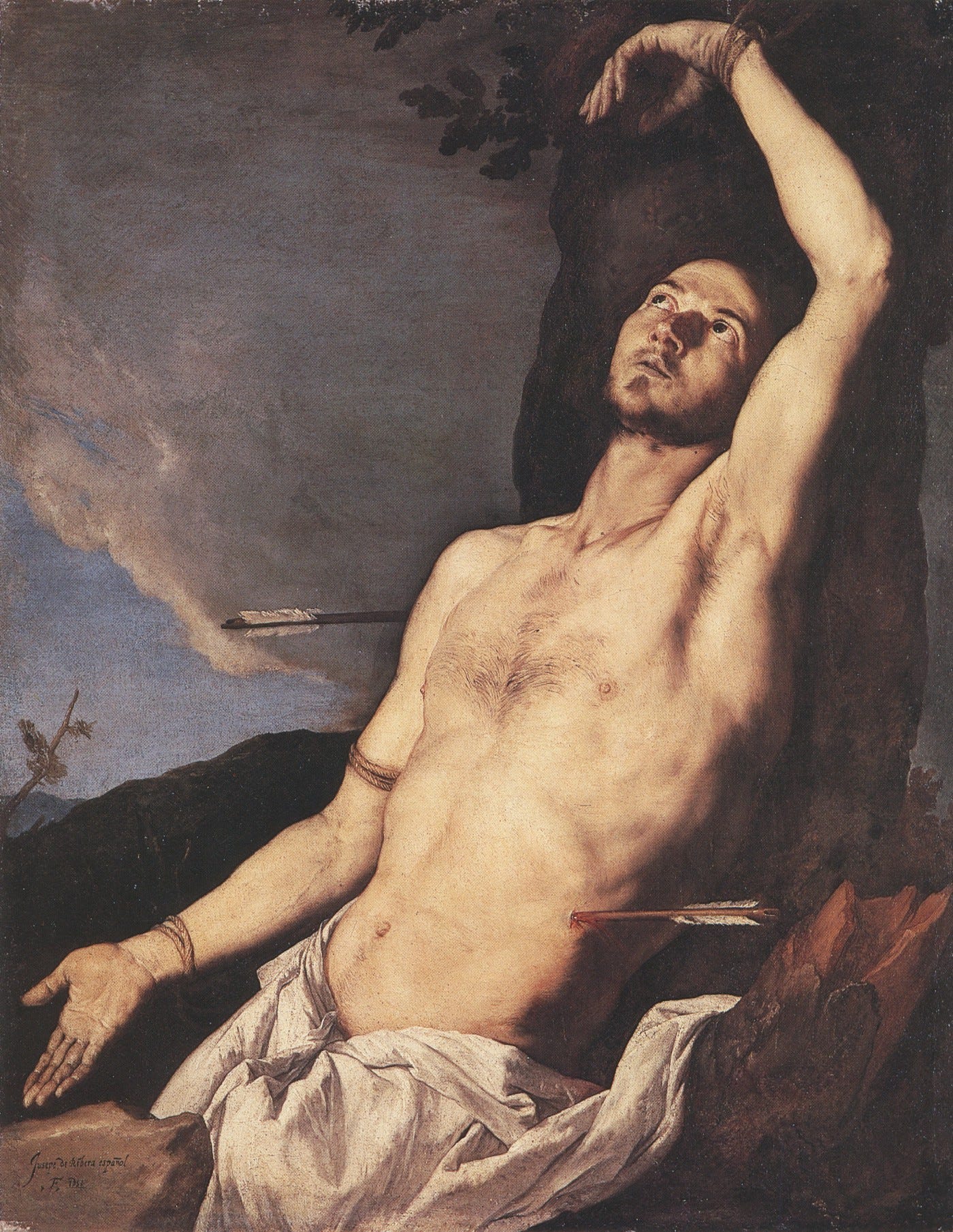
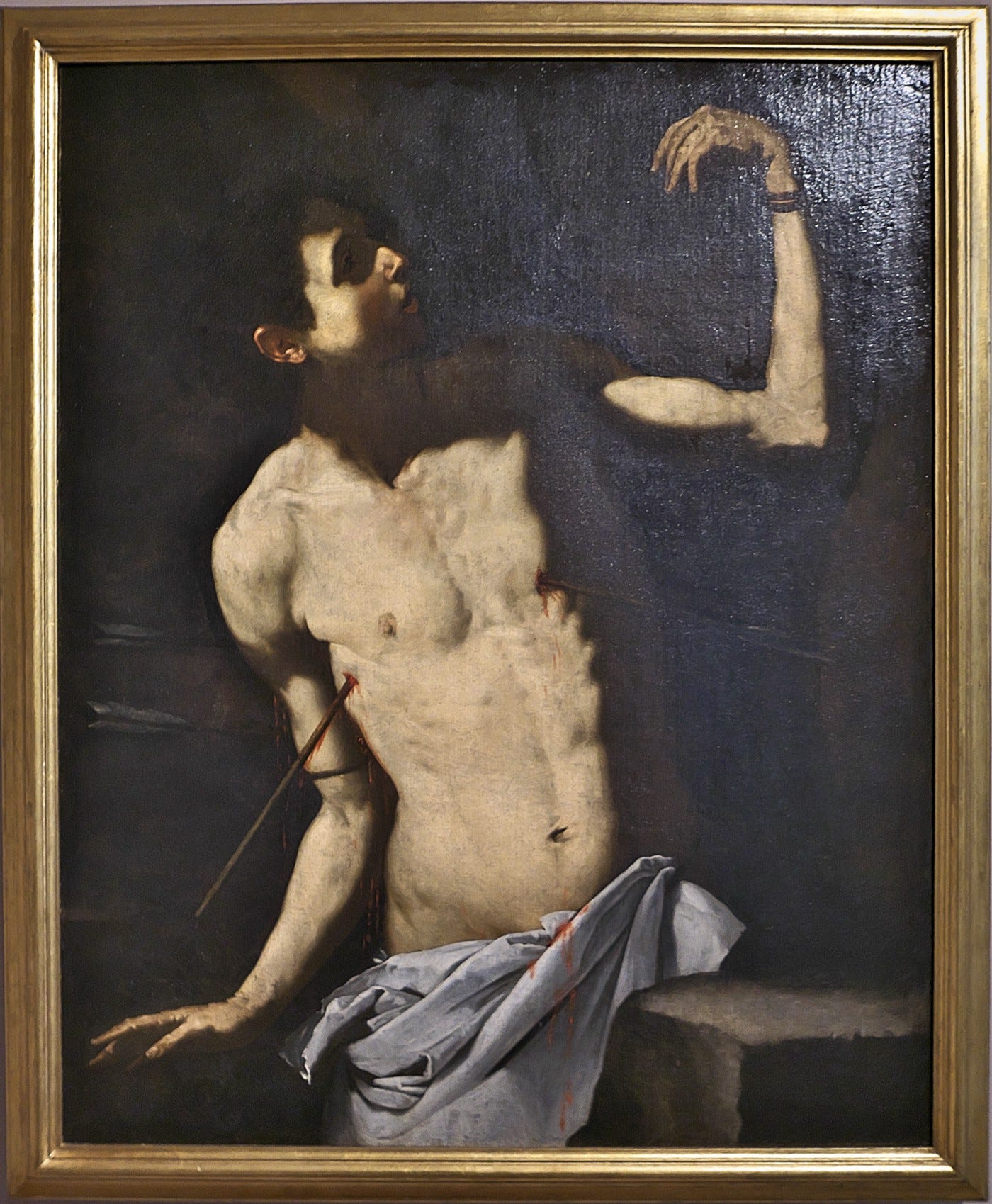
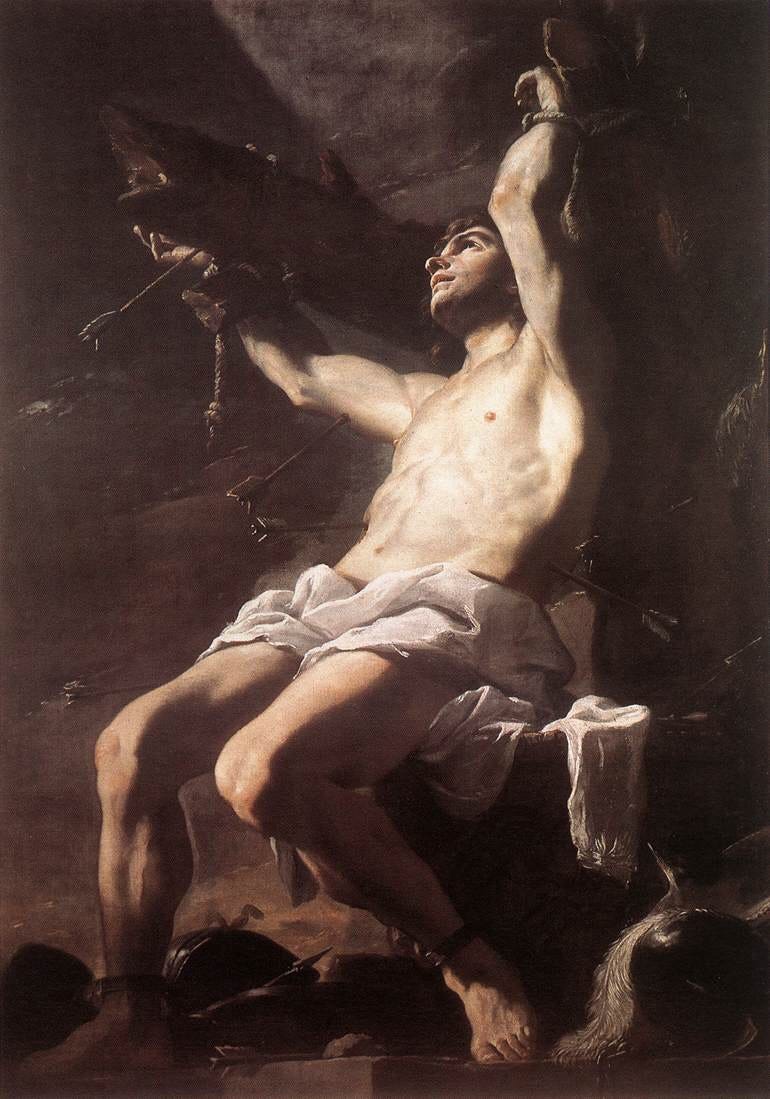
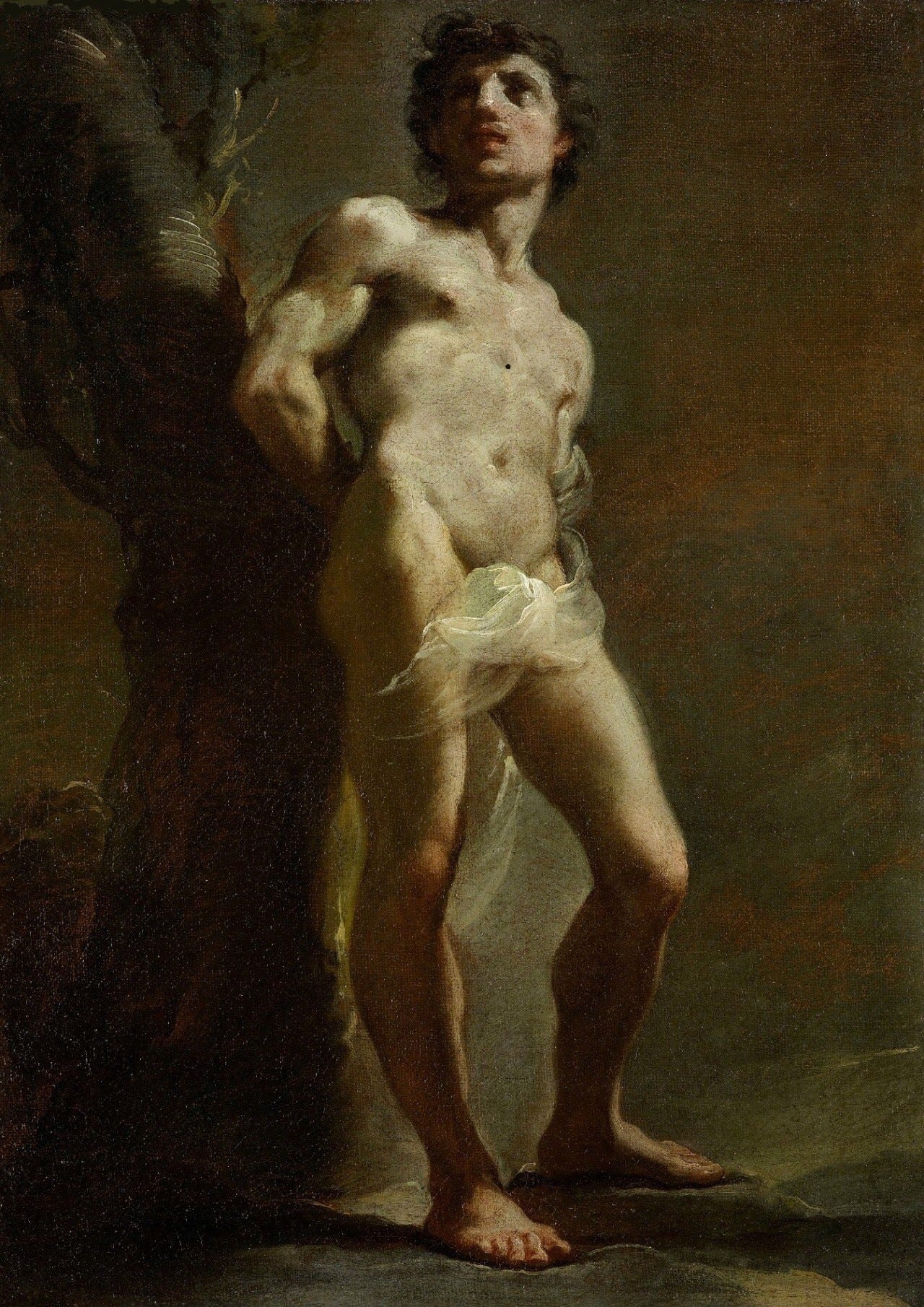

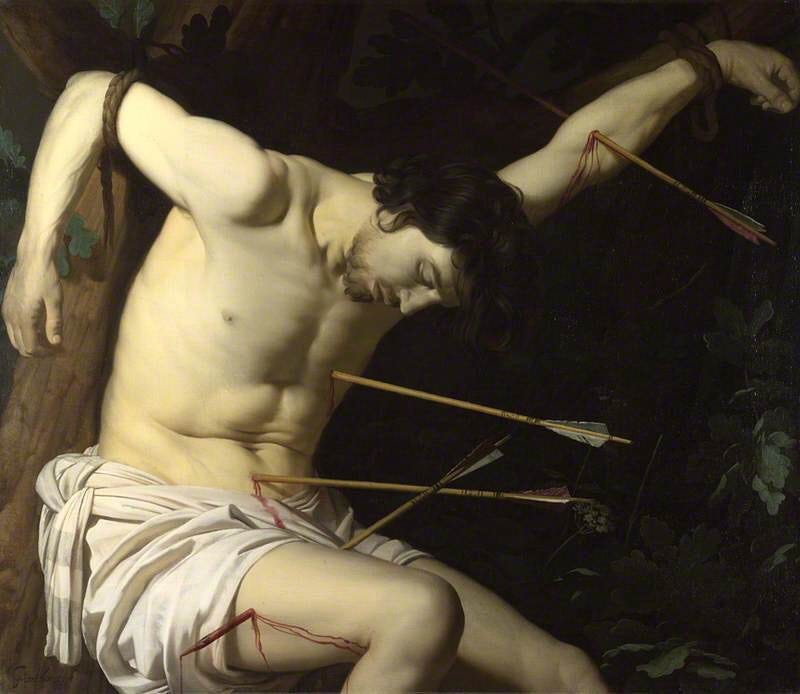
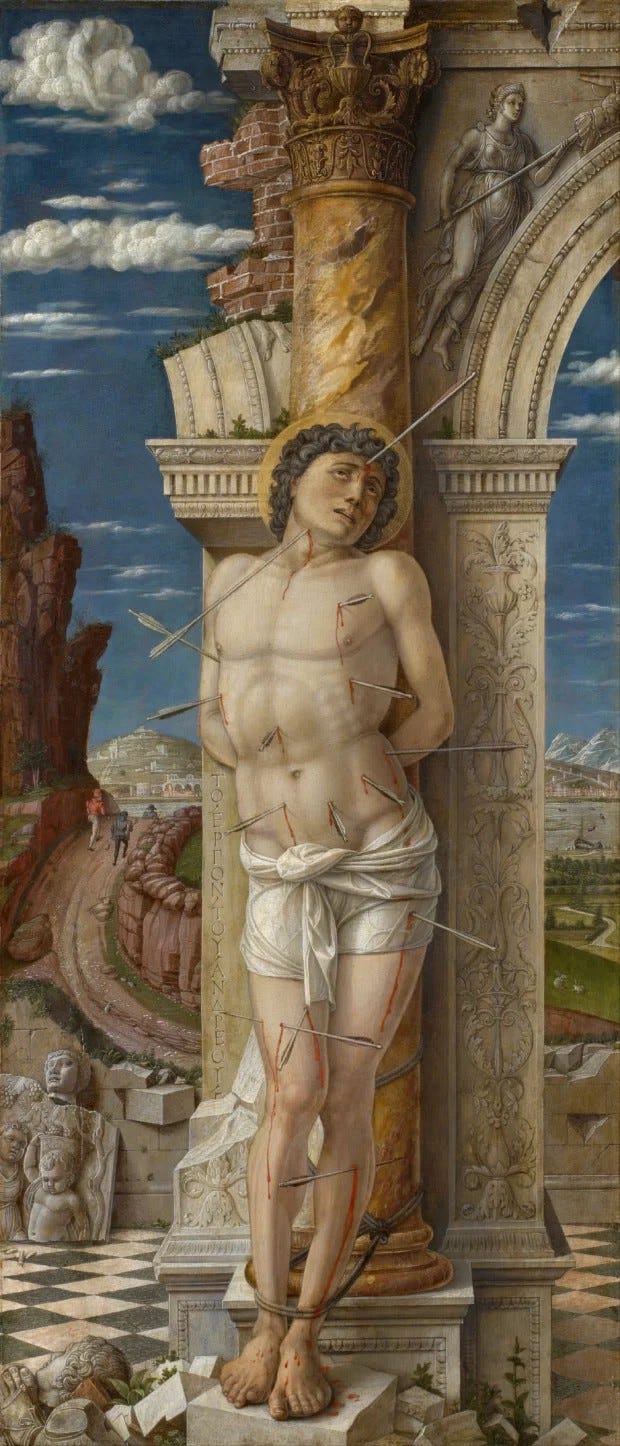

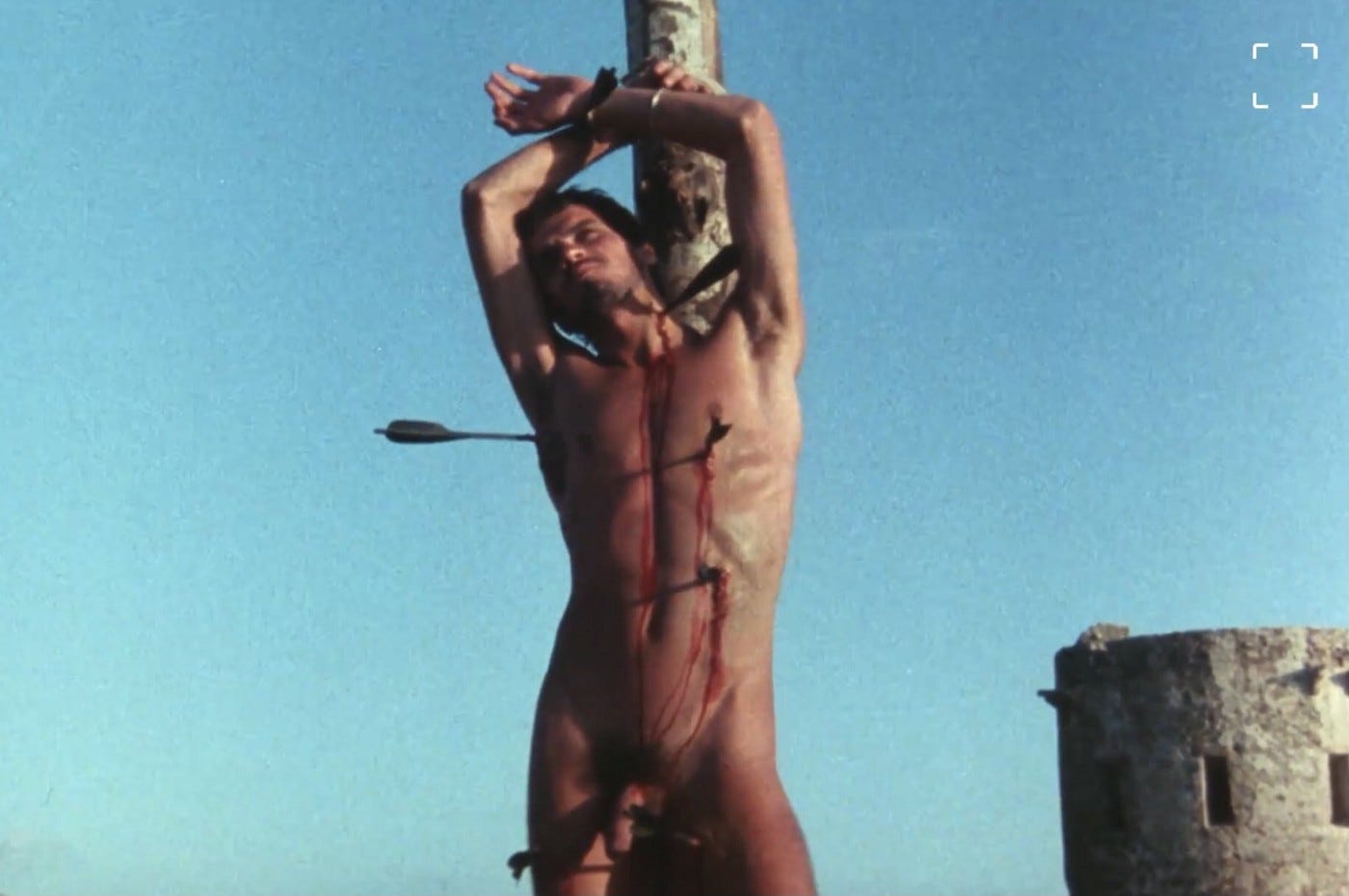


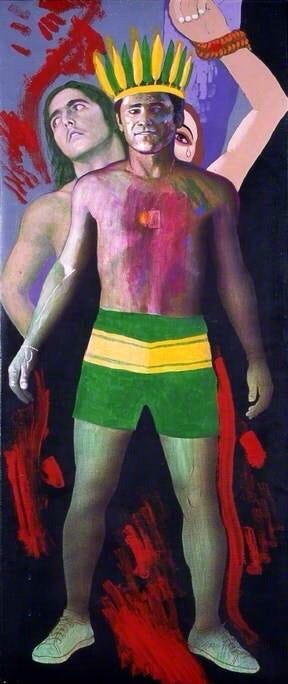

¡Muy interesante! I love a look into the interwoven aspects of religion and culture. Plus, I've added a new word to my vocabulary. Hmmm... Maybe I can talk about the ephebic guys in the K-Pop bands?